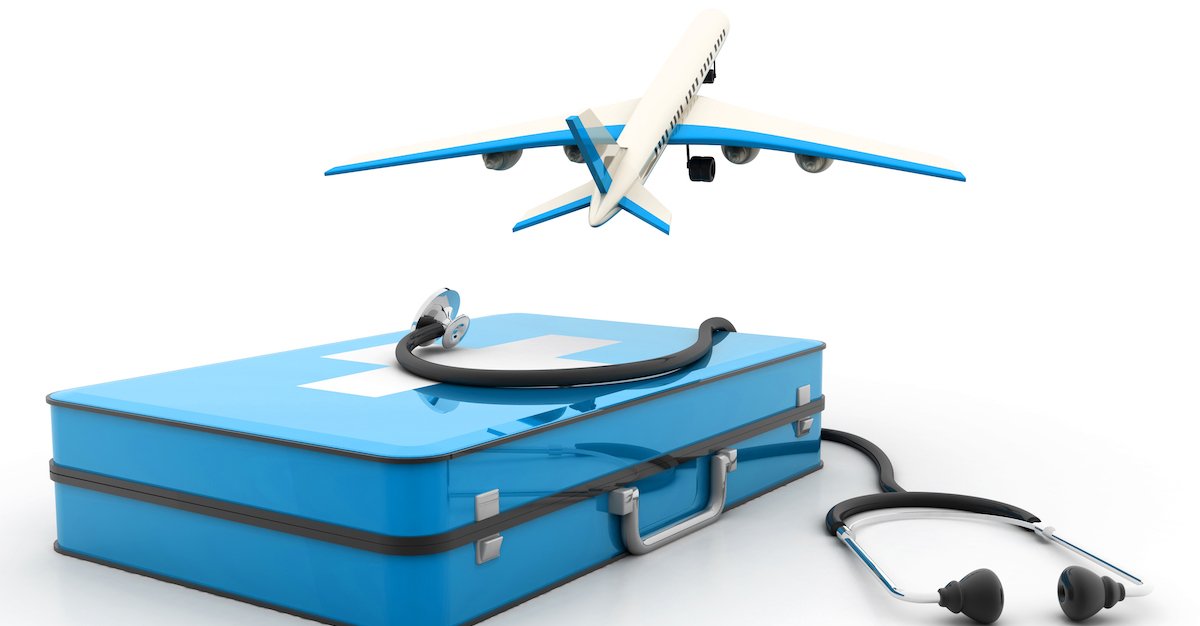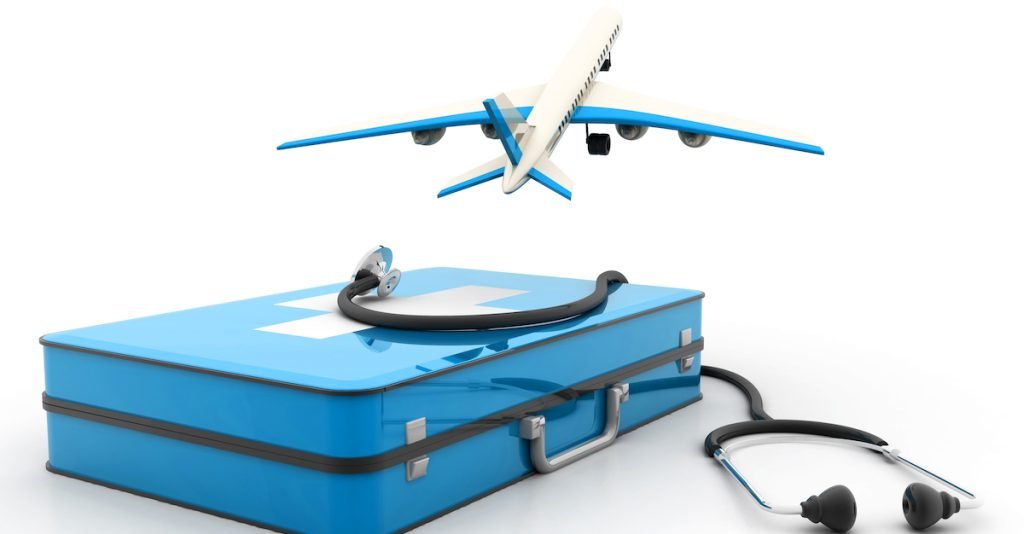This week I had the incredible joy of welcoming my son into the world. He’s healthy, happy, and at nearly 9 pounds, quite strong.
As soon as we found out she was pregnant, my wife and I made a very deliberate decision to have the baby in Cancun, Mexico. We live in Puerto Rico, but we found with our last child that the healthcare experience here in Mexico is really top quality… yet incredibly inexpensive.
By comparison, I recently read a story about a 30-year old man who got into a car accident in Modesto, California. Luckily, he was not critically injured. But since the crash did cause some shoulder and back pain, he went to the hospital to make sure it was nothing serious.
His three-hour hospital visit consisted of a quick chat with an ER doctor who wrote that the patient “looks good”. He also received a prescription for pain medication.
And his bill came to $44,914.
Sadly, his story is not unique. It’s easy to find cases, for example, of a surprise $8,000 bill for a colonoscopy at an “out-of-network” provider; i.e. a medical center that doesn’t accept certain insurance. Or an extra $1,600 tacked onto the bill for a birth, just for the epidural.
Spending on healthcare in the US was about $2,000 per person in 1970, adjusted for inflation in 2022 dollars. Today, it is over $12,000 per capita.
During that time, we have seen plenty of new regulation in the healthcare system, including HIPPA and even a regulatory overhaul with the Affordable Care Act, or “Obamacare”.
Somehow that has made care less affordable, and hasn’t improved the quality.
And while the healthcare workforce has increased in the US by 75% since 1990, 95% of the new workers are administrative staff.
The solution, however, is not “free” healthcare — “free” ends up being the most expensive of all.
The UK’s socialized medical system is short-staffed by about 100,000 positions. And as a result, millions of UK patients are sitting on wait-lists; paying with their time and deteriorating health.
Canada’s socialized healthcare system is similar.
Despite having one of the highest per capita spending on healthcare of any country, Canadians wait a median of over 25 weeks to see a specialist. In 1993, the median wait time was about 9 weeks.
But head down to Mexico City, and you’ll find the clinics packed with Canadians, happy to pay out of pocket for immediate, quality healthcare.
If you are willing to look outside of your home country’s borders, you’ll find a thriving medical tourism industry around the world.
And if you think that means sacrificing quality, you will be surprised.
My own experience here in Mexico has been stellar. What we found was amazing personalized care, accommodation, and comfort, for a fraction of the price we would have paid in the US.
(The added benefit is that a baby born in Mexico is automatically a Mexican citizen, and the parents are fast tracked to citizenship in just two years. If you want to hear all about it, you can listen to the podcast here.)
Often, medical tourism destinations will have a particular specialty.
Mexico, for example, captures a lot of Americans going south for dental work, because Mexican care costs about 65% less. While it can cost nearly $4,000 for a single dental implant in the US, one of Cancun’s most popular dental clinics charges $900 each.
Mexico is also a great location for check-ups. For example, an “executive” exam is a thorough work-up of your blood, organ functions and more which costs about $5,000 in the United States.
At various hospitals from Cancun to Mexico City, the range for this type of exam is between $850-$1,500.
Are Mexican doctors as well trained and qualified as US doctors? At many facilities, yes. For example, Medica Sur in Mexico City partners with the prestigious Mayo Clinic Care Network.
With such easy access to quality healthcare, the low cost of living, and an easy path to permanent residency for retirees, Mexico is a great option to consider for retirement.
Colombia has some of Latin America’s highest rated hospitals and clinics.
According to a 2019 study by América Economia, 24 of the top 58 Latin American clinics and hospitals are in Colombia. And you’ll pay about a 40% discount from American prices.
Several of these hospitals are JCI-accredited (Joint Commission International (JCI) — an independent nonprofit hospital rating agency), and capable of delivering essentially any medical procedures you might require.
Panama’s specialty could be considered stem cell treatment.
First off, stem cells don’t have to come from aborted embryos. Rather, scientists can extract stem cells from a cadaver and use this material for knee injections, for example.
But the US Food and Drug Administration (FDA) does not allow this type of stem cell treatment.
Panama is a convenient destination in the Americas to take advantage of stem cell injections.
For example, operating since 2006, Dr. Neil Riordan (Ph.D in Health Sciences) and his Stem Cell Institute have treated thousands of patients, including some prominent ones like Home Depot’s founder Bernie Marcus.
Moving away from Latin America…
What countries are best for high quality, reasonably priced medical tourism in Asia?
Thailand’s medical tourism hospitals, for example, may feel more like going to a luxury hotel.
Bumrungrad offers exquisite lobbies, concierge service, gourmet restaurants, luxury accommodations and nurses that are more like butlers.
Bumrungrad International Hospital in Bangkok was the first in Asia to obtain JCI accreditation. Browsing the doctor profiles on its website, I found that the majority had received training in the US.
This hospital can handle your most serious surgeries. For example, heart bypass surgery generally costs about one fifth of the $100,000 US price tag.
And that price includes seven nights’ accommodation, including two in the post-surgical Coronary Care Unit.
Malaysia offers similar prices for quality care at JCI-accredited hospitals.
But for an even cheaper medical tourism option in Asia, consider this up and coming country in the medical field…
Vietnam is relatively new to the medical tourism scene, which could be why its prices tend to be lower than Thailand and Malaysia. But once again, you won’t sacrifice quality.
In 2015, Vinmec International, which has locations throughout the country, was the first hospital in Vietnam to receive JCI accreditation.
What does open heart surgery cost in Vietnam? The most expensive type of open heart surgery listed on Vinmec International’s website costs only about $5,000.
Lithuania is a medical tourism destination you might consider in Europe.
The first JCI-accredited hospital in the Baltic states and eastern Europe, Kardiolita Hospital in Vilnius lists cardiac aortocoronary bypass starting around 10,000 euro.
UK patients will be glad to know the hospital promises no wait times for procedures.
When you have a global view of the world, you give yourself many more options to solve problems — including medical issues.
Paying out of pocket allows you to skip lines, and often save money even including the cost of travel. And you don’t have to sacrifice quality.
For more details on these medical tourism destinations, Sovereign Confidential members can access our report on medical tourism destinations in Latin America here, or Asian and European medical tourism destinations here.









